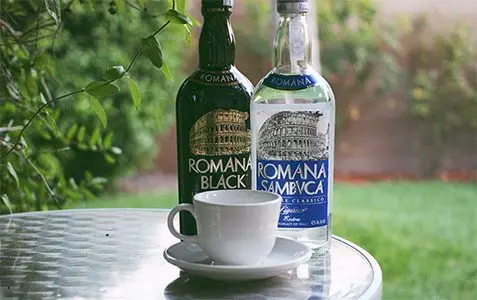A bottle of Romana sambuca with a spectacular image of the Colosseum on the label can be found in almost any bar in Europe and America. And in the US, Romana is the most popular sambuca. About six million bottles are produced annually.
Historical reference. In 1917, officer Virgilio Pallini was recovering in one of the Roman hospitals after being wounded at the front. In civilian life, Signor Virgilio was the heir to a small but prosperous family business for the production of liqueurs and tinctures. The factory of Antica Casa Pallini was located in the provincial town of Antrodoco.
Signor Vigilio’s father, Nicola Pallini, achieved everything in his life himself. Born into a poor peasant family and having received no education, Pallini Sr. managed to get rich and achieve a fairly high social position. Virgilio helped his father run the business from a young age.
Although the Antica Casa Pallini company existed since 1875, it was far from the metropolitan firms. The young provincial was in no hurry to return home. He seriously thought about how much more profitable it would be to move production closer to Rome.
Signor Vigilio discussed his ideas with a new acquaintance – a Russian officer who, together with his family, fled to Italy from the revolution. Although he never worked at a distillery, he was so good at chemistry that he even gave his Italian friend some advice on how to improve the distillation process.
Signor Vigilio was able to implement plans to transfer the company to the capital only after 5 years, in 1922. By this time he had built a distillery in Rome. The position of the chief technologist of the enterprise was taken by the same Russian officer. Pallini renamed his company ILAR (Industrie Liquori Antrodoco Roma). Later, in the second half of the XNUMXth century, the heirs of Signor Virgilio, leaving the old abbreviation, changed its decoding to Industria Liquori Affini Roma.
Since the 20s, ILAR has produced several excellent anise liqueurs, including Romana Sambuca. Every year the popularity of the drink increased, and even during the Second World War, production did not stop.
After the war, many Italians emigrated to the United States. They brought with them a love for national traditions. Having started exporting sambuca to the USA in 1962, ILAR occupied an empty niche in the market. Until now, in the American outback on Sundays, it is customary to drink Romana sambuca at dinner.
To solve the company’s financial problems, in 1987 the Pallini family decided to sell the Romana brand to the British company Guinness Grand Metropolitan plc. By that time, the production of sambuca had exceeded 2 million bottles, of which 80% were exported.
In 1997, Guinness Grand Metropolitan plc merged with Guinness plc to form Diageo plc. However, all these reorganizations had no effect on the quality of the Romana sambuca. It is still made at the ILAR-owned distillery. The firm is run by the great-grandson of the founder, Virgilio Pallini. The special pride of Signor Virgilio and his daughter Michaela is the invariance of the recipe for the famous drink. Sambuca Romana is made only from natural ingredients, without chemical flavorings.
Types of Sambuca Romana
Two varieties of sambuca Romana are produced, according to the creators’ idea, symbolizing day and night in Rome:
- Romana Sambuca – colorless transparent anise liqueur with a strength of 42%;
- Romana Black is a dark blue, almost black anise liqueur with the addition of licorice root.










